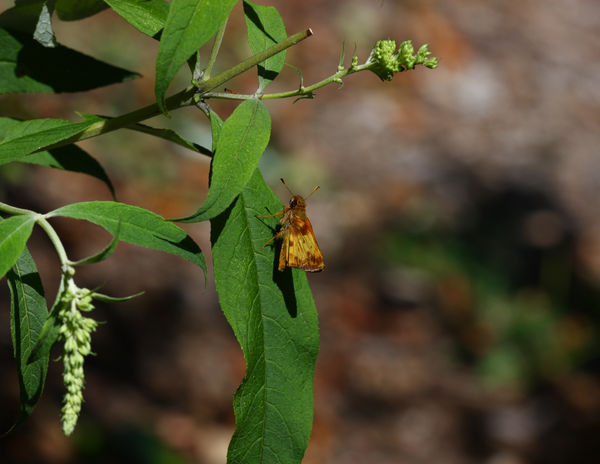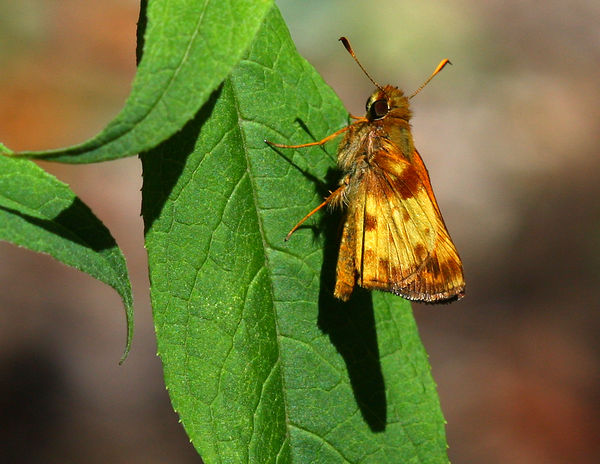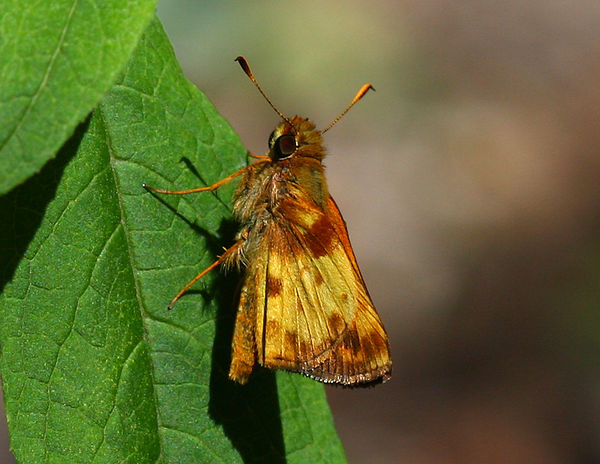My most important setting for butterflies
Sep 8, 2013 10:15:02 #
Butterflies are among the most assaulted of all prey. They owe their very lives to their wariness so they can be very difficult to approach. As a result, most shots of them are taken at a considerable distance. What you see in the viewfinder is a frame where the principal subject represents only a small dot in the middle.
In order to capture a shot with sharpness and exposure that is acceptable, I always shoot butterflies in AUTO-FOCUS mode and my metering mode is always set on SPOT. In conjunction with this setting, you need to select an AUTO-FOCUS POINT. Your manual will show you how to set this...I use the center point as mine for ease of tracking the butterflies until they land.
This setting causes your auto-focus system to isolate the tiny subject as it's only interest. Other metering modes use larger areas with multiple points that are read and averaged to achieve both focus and exposure settings. The butterfly is an insignificant portion of the metering when any setting other than SPOT is used.
The attached photo is shown in full frame, and the same photo is shown cropped using "Thirds" and finally as maximum cropped.
I hope that this will help in your greater enjoyment of butterfly photography.
Please view in DOWNLOAD mode.
Bob
(Incidentally) My camera is always set on SPOT metering.
In order to capture a shot with sharpness and exposure that is acceptable, I always shoot butterflies in AUTO-FOCUS mode and my metering mode is always set on SPOT. In conjunction with this setting, you need to select an AUTO-FOCUS POINT. Your manual will show you how to set this...I use the center point as mine for ease of tracking the butterflies until they land.
This setting causes your auto-focus system to isolate the tiny subject as it's only interest. Other metering modes use larger areas with multiple points that are read and averaged to achieve both focus and exposure settings. The butterfly is an insignificant portion of the metering when any setting other than SPOT is used.
The attached photo is shown in full frame, and the same photo is shown cropped using "Thirds" and finally as maximum cropped.
I hope that this will help in your greater enjoyment of butterfly photography.
Please view in DOWNLOAD mode.
Bob
(Incidentally) My camera is always set on SPOT metering.
Full frame as in viewfinder File size=3.71 MB

Cropped using "Thirds" File size=1.08 MB

Maximum cropping File size=696 kb

Sep 8, 2013 10:16:51 #
Sep 8, 2013 10:28:44 #
Sep 8, 2013 10:31:29 #
angler wrote:
Great shot and information Bob.Nice one.
Your comments are much appreciated!
Bob
Sep 8, 2013 10:33:35 #
Pablo8 wrote:
Nice result...I think your 'Butterfly' is a moth.
Thanks for your comments!
The 'Butterfly' is a 'Butterfly'! It is a Zabulon Skipper (Poanes zabulon)!
Bob
Sep 8, 2013 11:20:21 #
Sep 8, 2013 11:35:22 #
Sep 8, 2013 11:49:42 #
I use "spot" with autofocus or manual focus when time permits... good advice... :thumbup:
:thumbup:
bob_71 wrote:
Butterflies are among the most assaulted of all pr... (show quote)
:thumbup:
Sep 8, 2013 12:10:46 #
Singing Swan wrote:
It has clubbed antenna....doesn't that put it in the moth category???
The below is a quote from Wikipedia...
A Tiger Longwing butterfly (Heliconius hecale) - note the clubbed antennae and slender body
Shape and structure of antennae
The most obvious difference is in the feelers, or antennae. Most butterflies have thin slender filamentous antennae which are club-shaped at the end. Moths, on the other hand, often have comb-like or feathery antennae, or filamentous and unclubbed.[2] This distinction is the basis for the earliest taxonomic divisions in the Lepidoptera: the Rhopalocera ("clubbed horn", the butterflies) and the Heterocera ("varied horn", the moths).
Bob
Sep 8, 2013 12:11:57 #
GWR100 wrote:
Good set and info Bob :thumbup: :thumbup: :thumbup:
Thanks for your comments!
Bob
Sep 8, 2013 17:55:48 #
bob_71 wrote:
sorry ..my bad, I was thinking them backwards.The below is a quote from Wikipedia... br br br ... (show quote)
Sep 8, 2013 19:41:49 #
bob_71 wrote:
Butterflies are among the most assaulted of all pr... (show quote)
You do this so well Bob -- clear, concise and very valuable.
Hopefully these pieces will find their way together under one cover for an excellent photography tutorial.
Pierre
Sep 8, 2013 20:25:19 #
brucew29 wrote:
I use "spot" with autofocus or manual focus when time permits... good advice... :thumbup:
:thumbup:
:thumbup:
The older you get, the less you will use MANUAL!
Thanks for posting!
Bob
Sep 8, 2013 21:42:54 #
Singing Swan wrote:
sorry ..my bad, I was thinking them backwards.
Not a problem!
Thanks for getting involved!
Bob
Sep 9, 2013 09:36:22 #
PierreH wrote:
You do this so well Bob -- clear, concise and very valuable.
Hopefully these pieces will find their way together under one cover for an excellent photography tutorial.
Pierre
Hopefully these pieces will find their way together under one cover for an excellent photography tutorial.
Pierre
Thanks for your comments!
Bob
If you want to reply, then register here. Registration is free and your account is created instantly, so you can post right away.




